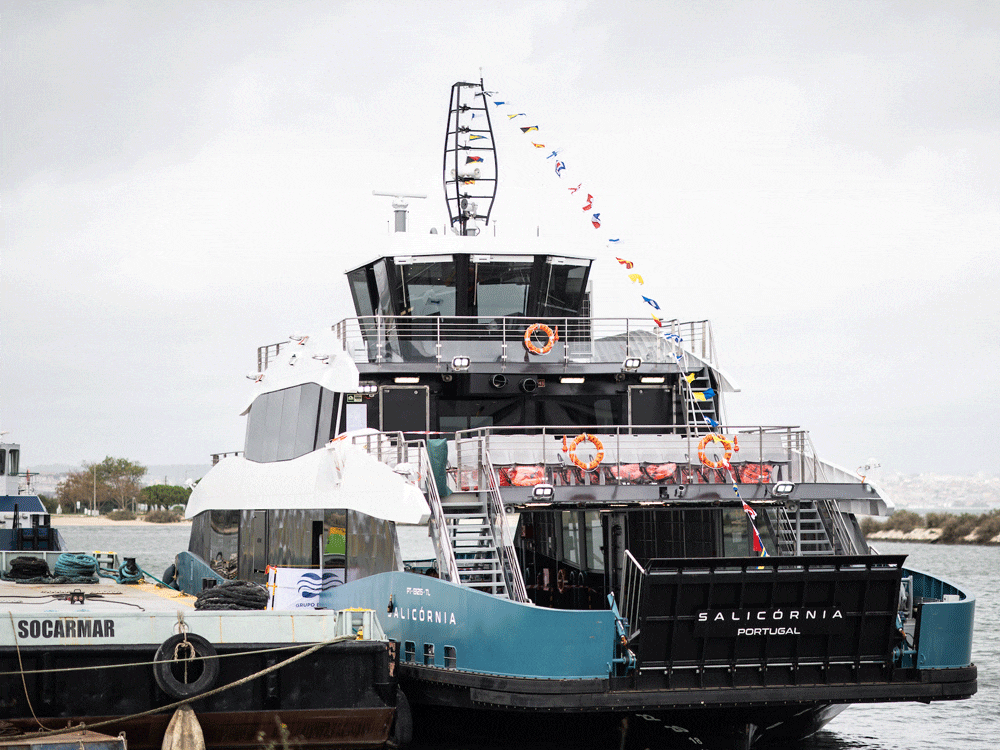Portuguese boatbuilder Navaltagus Shipyard has delivered what’s claimed to be the first all-electric ferry on the Iberian Peninsula. The battery-powered Salicornia will replace an older vessel on the São Jacinto-to-Ílhavo route, and Navaltagus predicts that the newcomer should reduce CO2 emissions by 300tonnes each year.
Salicornia features an overall length of 37.4m, a 9.2m beam and a draught of 1.7m. The ferry has the capacity for 260 passengers and 19 vehicles: increases of 30% and 90%, respectively, on the vessel it is replacing, Navaltagus says. The e-ferry is powered by Shift batteries, generating 511kW and controlled by a Danfoss power management system, which feed a pair of 200kW Veth VL-200si azimuth thrusters, resulting in a speed of 9knots. “Low noise levels and a 360º panoramic view on the top floor will further improve the passenger experience,” the yard says.
The e-ferry has an estimated value of €7.3 million, and the entire project amounted to around €9 million, including provision of the vessel’s charging system. Some financing was provided by the Portugal 2020 partnership, established between Portugal and the EU. Salicornia has been classed by DNV and will sail under the Portuguese flag.
Speaking at the e-ferry’s naming ceremony, José Ribau Esteves, mayor of Aveiro, hailed Salicornia as “the result of our investment in the environment and people”, adding: “We are applying our resources not only in the Ria de Aveiro, a place that needs our care, but also in the concrete lives of Aveirenses and in particular, in our town of São Jacinto, which needs this means of transport to go to work and to carry out their social, sporting and leisure activities.”




